The Circus in Front of my House
Adrian Sangeorzan wrote a "Holden Caulfield" novel with an extra-political dimension. The beauty and magic of childhood defends itself with all its might from the duplicity and charmless world of adults and over time it creates a real protection for innocence. It is a literary castle built of branches, found pieces and circus ropes, but the reader of these memories will step into the circus world with a new sense of freedom and the feeling that he can (as long as the charm lasts) breathe freely.

Quarantine Songs - click on the title link to read the PDF
Sangeorzan, in the tradition, and with the brilliance of Chekhov, weaves his own immigrant experience in these tales of a suspenseful human web. He is a writer for our time who answers the recurring question of American identity with exquisite and persuasive art. Andrei Codrescu, Poet and Chronicler of American Life

Among Women: Tales of a Women's Doctor
Sangeorzan, in the tradition, and with the brilliance of Chekhov, weaves his own immigrant experience in these tales of a suspenseful human web. He is a writer for our time who answers the recurring question of American identity with exquisite and persuasive art.
Andrei Codrescu, Poet and Chronicler of American Life

Exiled from the Womb: Tales of a Women's Doctor
This memoir presents us with a new Candide, a young, optimistic gynecologist, adrift in a Communist nightmare, and then suddenly face to face with the doubtful “paradise” of a New World. Whether it comes to helping desperate women in Romania, who’ve been forced to have unwanted pregnancies by a tyrannical dictator, dealing with right-to-life fanatics in New York or navigating the bewildering bureaucracy of a Manhattan hospital, Sangeorzan always maintains a refreshing sense of irony, a courageous compassion and a knee-slapping spirit of humor. He embodies something that’s been missing from the American scene since William Carlos Williams: the poet-doctor—a person who works to heal our all-too-impermanent bodies without sacrificing the sensitivity, intellect and humor that nourish our minds and souls. Bruce Benderson
 The Anatomy of the Moon, Scrisul Romanesc Publishing House, Romania 2010
The Anatomy of the Moon, Scrisul Romanesc Publishing House, Romania 2010
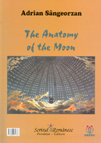
Tattoos on Marble, Scrisul Romanesc Publishing House, Romania
2006
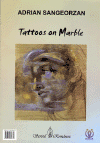
Between Two Worlds
– Tales of a Women’s Doctor, Memoirs
Scrisul Romanesc
Publishing House, Romania 2005;
Foreword by Dumitru Radu Popa
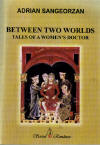 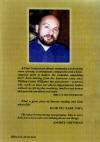
Dumitru
Radu Popa about Between Two Worlds – Tales of a Women Doctor
Adrian Sangeorzan is one of the most
outstanding contemporary Romanian writers. He was not a wonder-child, as
we are somehow accustomed in this kind of “performing art”. Adrian’s
recourse to literature happened at an older age and spiritual maturity,
and it was determined by at least two major reasons, both mentioned in
the title of his book. One of them is the experience of living between
two worlds. The other one is being a women doctor. His
literary style is as abrupt as refined: a man who does not have
apparently the time or the taste for elaborated allegories or metaphors.
For literature is for him, being it poetry or prose, just another way of
coming to terms with his own interior design of the soul. Or, in other
words, it is an attempt to witness the adventure of a “clean” character –
he himself is the main character of his writings – in worlds that are so
different from each other. Communist Romania, on one side, where the
craziness of a dictator transformed the whole country in a nightmare;
America, the realm of all dreams, on the other side, that sometimes
reduces the individual to the object of a terrible kafkianesque journey
(see the story titled Canada. Almost all of us, immigrants in this country, legally or illegally, went through the syndrome of being suspended between two worlds.
Adrian, in my opinion got the best out of it, by illustrating, in a kind of fascinating vivisection, the following theme: how and to what extent, you can survive and eventually make a sense of this painful transition. Some of his stories, as crazy as a common reader could find them, are the expression of a genuine complexity of feelings, between the concept of total interdiction and the one of an endlessly freedom that, at least in the beginning, results to be rather puzzling than liberating. Adrian does not label anything or anybody; nor does he praise or reprove his experiences. It is just a testimony, full of a very peculiar sense of humor, of all his journeys in this “New World” that he tries to understand. And from the “New World perspective” he recuperates sometimes with a very special sense of humor experiences from the old country (the stories titled Circumcisions and Tattoos Collection are especially relevant). As a women doctor, in the end he takes all this transition as another birth. Only, this time, he is both the doctor who presides over the miracle of birth and the new creature who has to be born: “my second birth, he says, was the most difficult one I had to attend”. And then, in another place: “When I say I’ve been born for a second time, I really mean it. You should give me a bit of credit about it, as I’ve been for over 20 years in this business. It was, as I said, the most difficult birth that I’ve ever attended; my own rebirth in America, when I was 36. When it comes to Adrian’s capacity to recollect his former life, as a women doctor in Romania, we are called to testify, on a first hand basis, one of the most terrifying experiences of the past century.
The movie “Children of the Decree” that follows will give you an even better image of this. Adrian offers a very vivid and accurate account of what happened in that country where a crazy dictator decided that, if he couldn’t expend his territory, at least he would have an ever-growing population. Contraceptives were illegal, and abortion was a crime. In the name of the respect for life, in 25 years Romania has had one of the highest mortality rates among infants and pregnant women. “I chose to be a women doctor, Adrian says, because it was something about life, but in Communist Romania it was in fact mostly about death and lies”. When the productivity of children is put together with the productivity in all the other branches of the economy, one can easily understand what kind of happiness Romania was going through. As the quality of life went down day by day, the newspapers and the television heralded great victories in all the fields, accomplishments unheard of before. Everything was Orwellian and, reading Adrian’s stories, one could ask himself whether the reality inspired the fiction or was it the other way around . . . In a bitter joke of those times someone asked: What is the ultimate degree of endurance? And the answer was the ultimate degree of endurance is to be Romanian! In this context, Adrian does see himself neither as a hero nor as a dissident. He is, and this is very important, a true and reliable witness, an intelligent, full of compassion and sensitivity one. And, moreover, one who knows how to write and incorporate reality into literature. To such an extent that, in the final of this second edition of his remarkable book, after seeing his own image in the movie “Children of the Decree”, he has a reaction absolutely in the line with my previous statement about the competition between reality and fiction. Let’s see what he has to say. “After I saw myself on that screen, in New York, witnessing in English about a time that my memory couldn’t neither block-out nor clean up of its tragic and horrible features, I reiterated all the feelings I had when writing the chapters of this book. I revisited that world of my first life, the way it was, in a heavy black-and-white, with some touches of colors as they would have been added artificially, by an unskilled or demented painter. I, myself, the one who was speaking, turned in a gray color recalling those times. Did I have a nightmare, was it a grotesque and surreal illusion, or maybe I was just part of an experiment?” So, what a great peace of literary reading and God, what a life!
Over the Life Line, poems, cover and illustrations by St. Munteanu,
Spuyten Duyvil Press NYC 2003
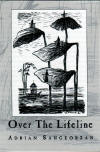 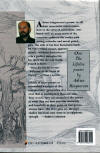
About Over the Life Line
Adrian Sangeorzan's poems, in all their associative verve - somehow in the orbit of surrealism, combined with an acute sense of the concrete - address the reader with strong attitudes and moral principles. The title of his first Romanian book, PE VIU - which means, approximately " Without Anesthesia" - is a perfect metaphor for his thirst for the real world, even if it hurts. It's a joy for me to say: "Welcome to the Feast of Poetry!"Nina Cassian"I think of these poems as astonished watchers of the extraordinary gymnastics of a river that is nothing less than our time. They watch, they tell themselves the stories of what they see now and stay ironically and hopefully at their posts as true poems always have. The river goes on, the poet shakes his head, now there is an epiphanic epitaph." Andrei CodrescuThe book brings memorable aspects of the immigration and a doctor’s life back in communist Romania and in New York.
The book is also related with the documentary CHILDREN OF THE DECREE recently released in Germany.
CHILDREN OF THE DECREE
Deutschland / Rumänien / Belgien, ZDF; Duitsland, 2004, 52 min.
Editing: Wolfgang Lehmann; Photography: Carlos Fuchs, P. Reuther
Producer: Razvan Georgescu; Directed by: Florin Iepan; Screenplay: Razvan Georgescu, Florin Iepan
“Procreation is the social duty of all fertile women,” was the political thinking during the 1960s and 1970s in Romania. In 1966, Ceausescu issued Decree 770, in which he forbade abortion for all women unless they were over forty or were already taking care of four children. All forms of contraception were totally banned. The New Romanian Man was born. By 1969, the country had a million babies more than the previous average. Thousands of kindergartens were built overnight. Children had to participate in sports and cultural activities. Romanian society was rapidly changing. By using very interesting archival footage and excerpts from old fiction films and by interviewing personalities from that time – gynecologists (main consultant is dr. Adrian Sângeorzan) or mothers who were part of the new society – the director revives this period of tremendous oppression of personal freedom. Many deaths were caused by the mere fact that women, including wives of secret Romanian agents, famous TV presenters and actresses, had to undergo illegal abortions. Many women were jailed for having them. Ten thousand women died by using awkward abortion methods. Sex life was no fun anymore. But still, Romania had a demographic boom and hosted a world conference on population in 1974.
_______________________________________________________________________
Adrian Sangeorzan is an unusual writer, first of all because he is an unusual man with an unusual life. With his first collection of stories he walks into American literature of memoirs as confidently as he walks into the operation room next morning in order to stop patient’s bleeding. One has to be bold and independent in order to be a writer and to be a surgeon. Incidentally, boldness and independence from everybody (but not from everything, which is a big difference!) is what creativity is all about. Adrian Sangeorzan understands intuitively with his heart and talent and that is what he tells his reader in every story. His voice is very strong and genuine. This is not a belle lettre but a real voice talking about real things. Andrey Gritsman
This memoir presents us with a new Candide, a young, optimistic and often naïve gynecologist, adrift in a Communist nightmare, and then suddenly face to face with the doubtful “paradise” of a New World. Whether it comes to performing abortions for desperate women in Romania, who’ve been forced to have unwanted pregnancies by a tyrannical dictator, dealing with right-to-life fanatics in New York or navigating the bewildering bureaucracy of a Manhattan hospital, Sangeorzan always maintains a refreshing sense of irony, a courageous compassion and a knee-slapping spirit of humor. He embodies something that’s been missing from the American scene since William Carlos Williams: the poet-doctor—a person who works to heal our all-too-impermanent bodies without sacrificing the sensitivity, intellect and humor that nourish our minds and souls. Bruce Benderson
|
 |

